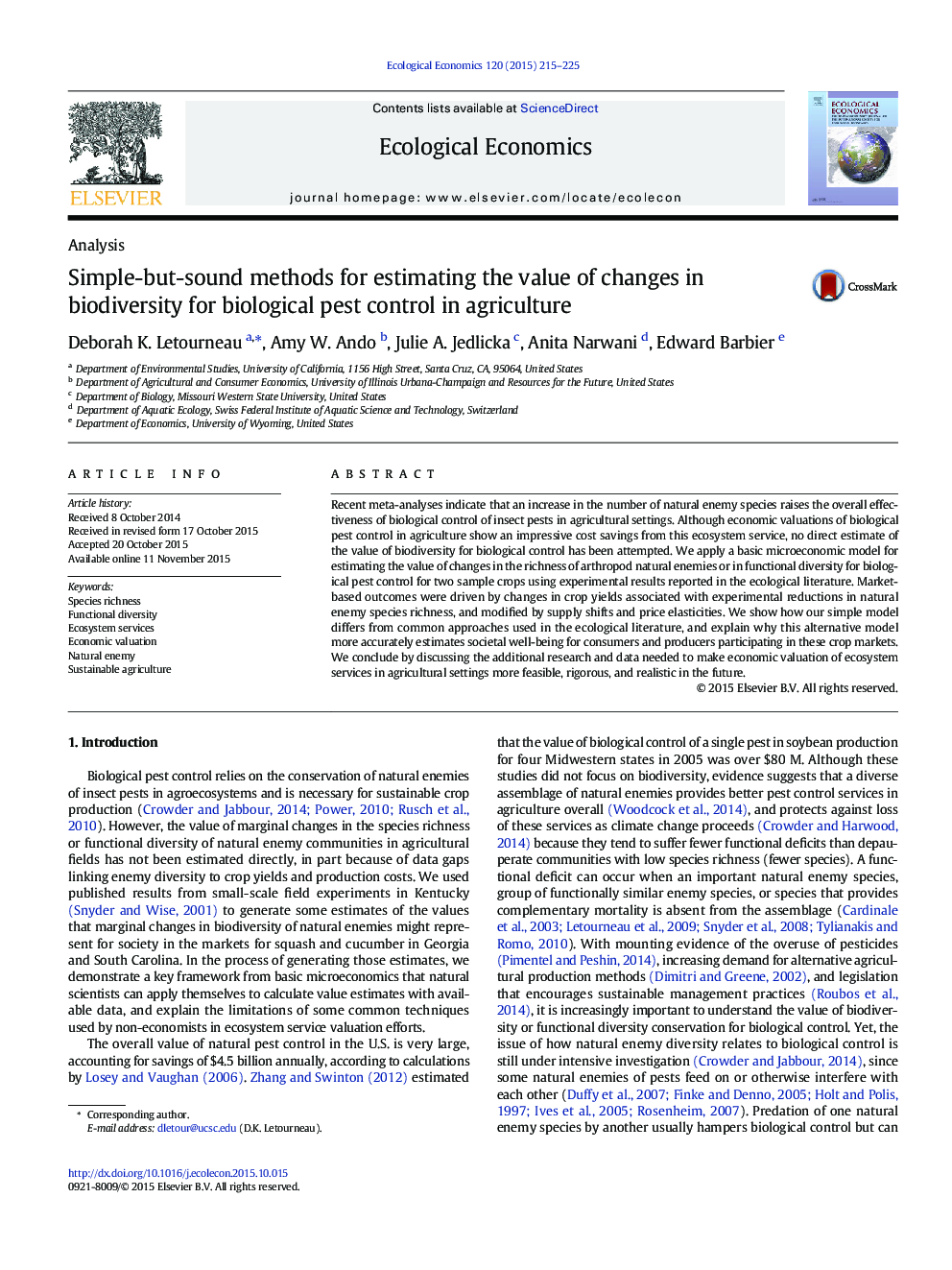| Article ID | Journal | Published Year | Pages | File Type |
|---|---|---|---|---|
| 5049201 | Ecological Economics | 2015 | 11 Pages |
•We provide the first economic valuation of natural enemy diversity for pest control.•A basic economic model avoids common pitfalls seen in the ecological literature.•Field experiments show how a reduction in enemy diversity can be costly for producers.•Economic impacts, however, depend on biological interactions and farmer practices.•Rigorous valuations need practical data rarely included in ecological studies.
Recent meta-analyses indicate that an increase in the number of natural enemy species raises the overall effectiveness of biological control of insect pests in agricultural settings. Although economic valuations of biological pest control in agriculture show an impressive cost savings from this ecosystem service, no direct estimate of the value of biodiversity for biological control has been attempted. We apply a basic microeconomic model for estimating the value of changes in the richness of arthropod natural enemies or in functional diversity for biological pest control for two sample crops using experimental results reported in the ecological literature. Market-based outcomes were driven by changes in crop yields associated with experimental reductions in natural enemy species richness, and modified by supply shifts and price elasticities. We show how our simple model differs from common approaches used in the ecological literature, and explain why this alternative model more accurately estimates societal well-being for consumers and producers participating in these crop markets. We conclude by discussing the additional research and data needed to make economic valuation of ecosystem services in agricultural settings more feasible, rigorous, and realistic in the future.
Graphical AbstractAn increase in the cost of production from yield losses associated with a drop in natural enemy functional diversity (reported by Snyder and Wise 2001) could cause relatively large impacts on social welfare, here showing disproportionate effects on fresh market cucumber compared to squash, producers compared to consumers and how a commonly used alternative valuation model would underestimate the size of the impact on total surplus (spider photos by Maycee Hash, illustrations by DKL)Figure optionsDownload full-size imageDownload as PowerPoint slide
